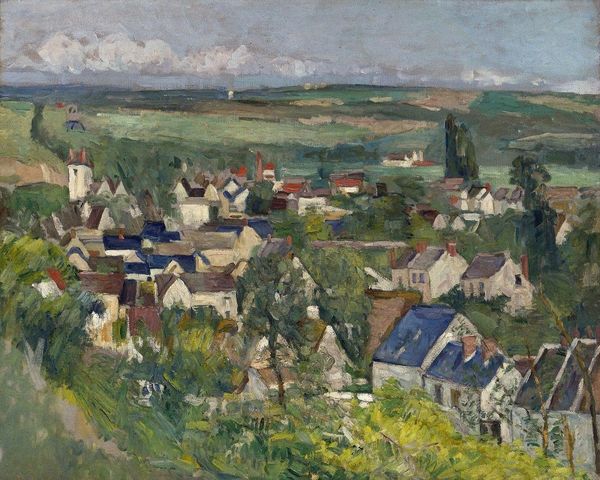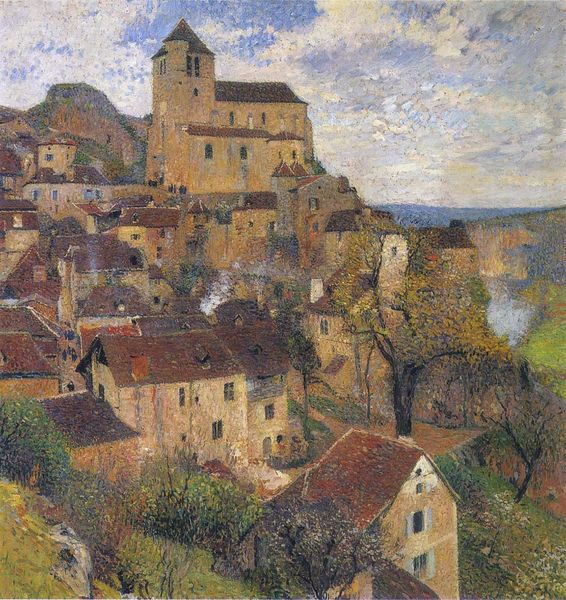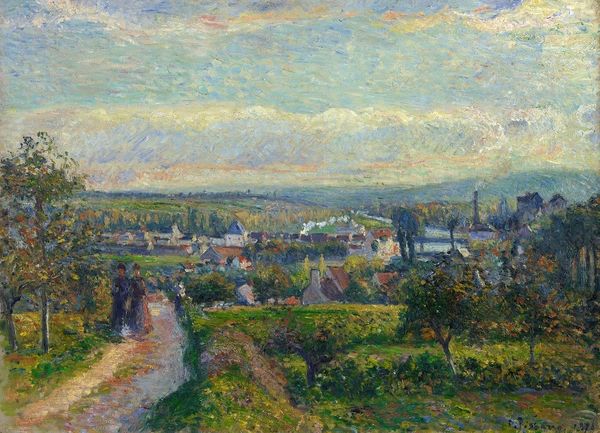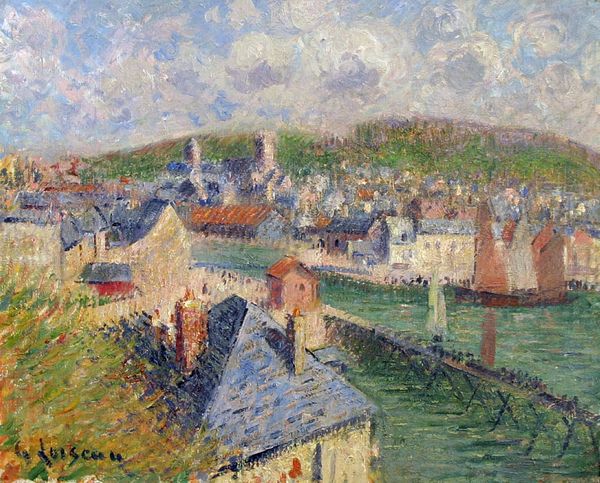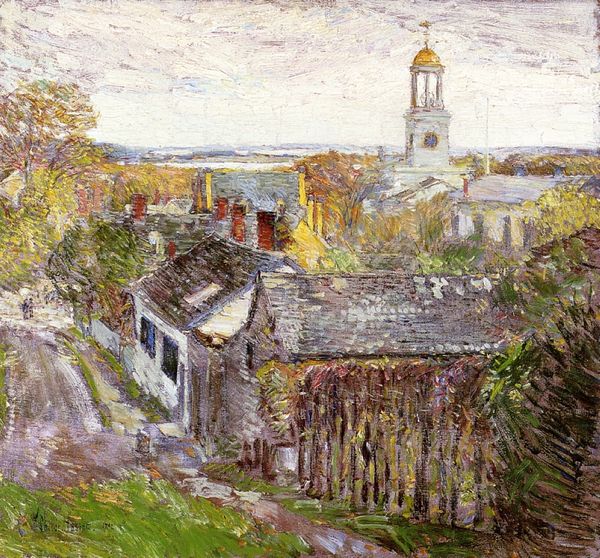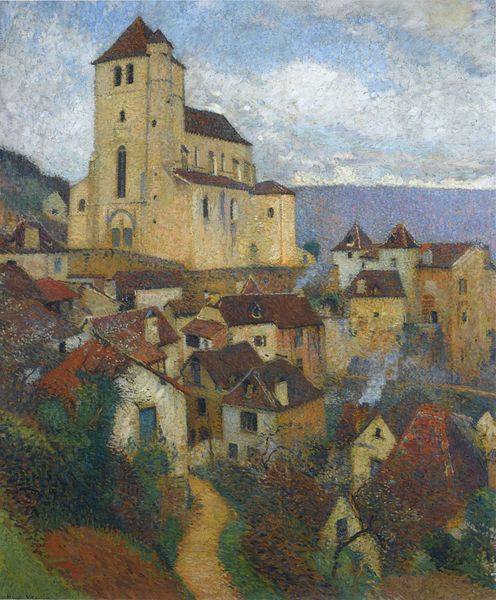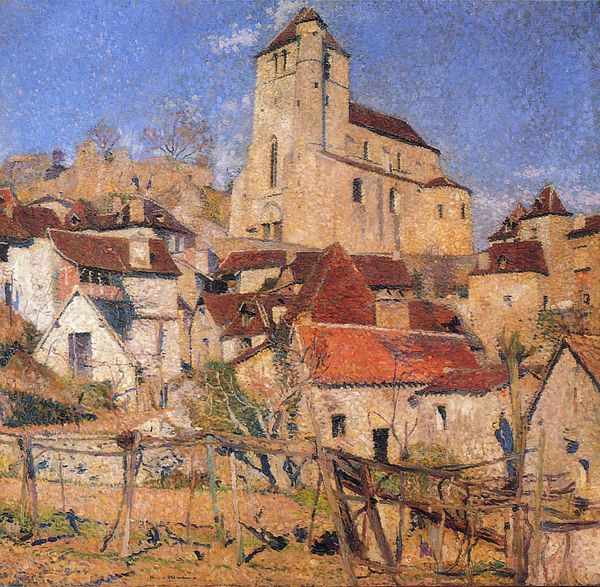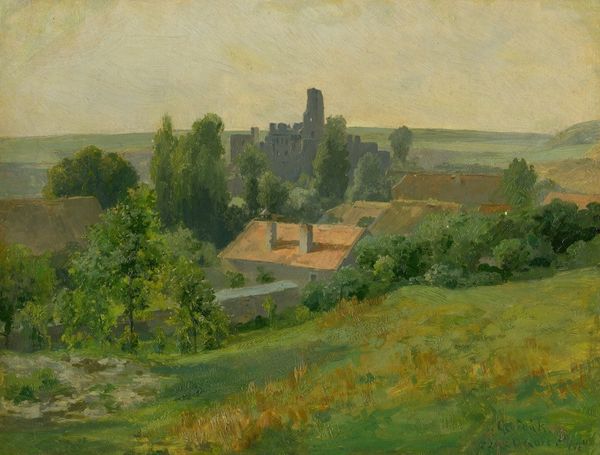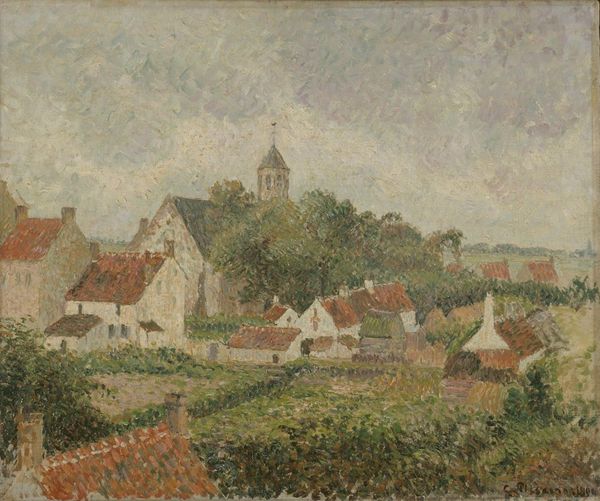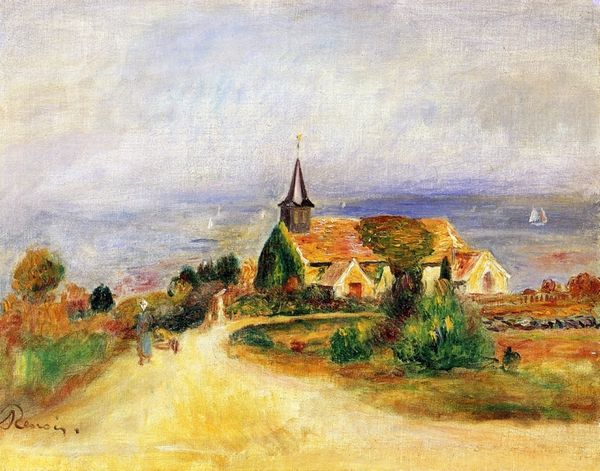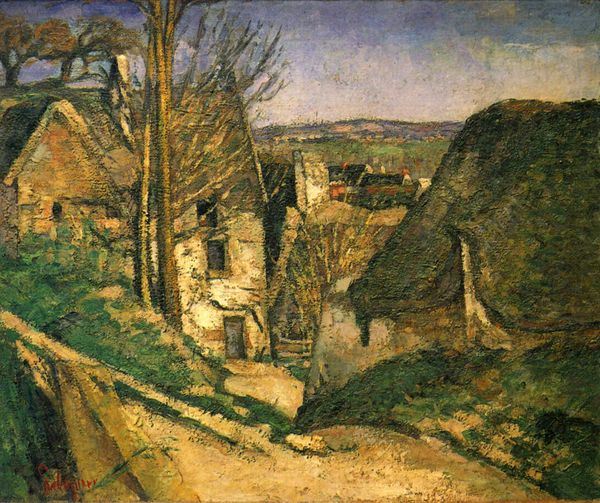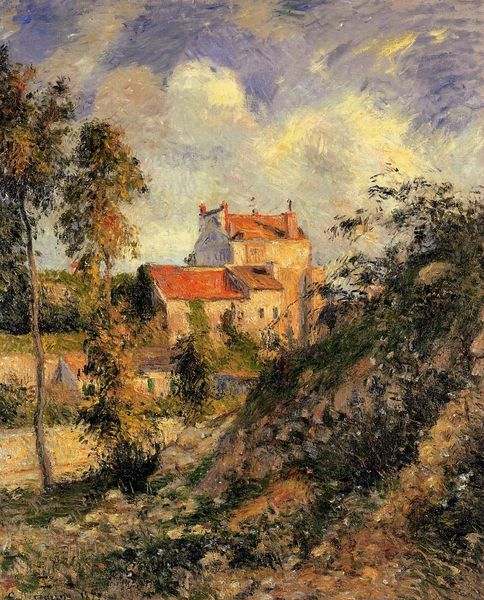
plein-air, oil-paint
#
impressionism
#
plein-air
#
oil-paint
#
landscape
#
impressionist landscape
#
oil painting
#
seascape
#
cityscape
Copyright: Public domain
Curator: At first glance, Monet’s “Dieppe,” created in 1882, seems almost melancholic. The overcast sky dominates the canvas. Editor: It's true, there's a palpable sense of atmospheric weight here, isn’t there? Monet really captures the effect. The subdued palette and broken brushstrokes contribute to the feeling. I am immediately drawn into it. Curator: This painting embodies Impressionism, particularly through its "en plein air" technique. Monet chose to paint outdoors to directly capture the light and atmosphere of the scene. Editor: Considering its place within art history, the rise of "en plein air" was more than just about technique. It's entwined with broader social shifts - the availability of portable paint tubes, for example, which democratized access to art-making. The Impressionists shifted the focus to the painter’s direct experience of their environment, right? Curator: Precisely. "Dieppe" reveals how the subject became less about objective representation, and more about the artist's subjective impression. Look at the handling of the paint; see how it becomes almost sculptural, each stroke deliberate yet seemingly spontaneous. The visible brushwork draws attention to the physical act of painting itself. Editor: And what role does a place like Dieppe play? During the late 19th century, coastal towns like Dieppe became popular destinations as railroads expanded access. It provided settings outside the rapidly industrializing urban centers for painters like Monet, who were searching for more "authentic" imagery. It’s a perfect example of how tourism reshaped the artistic landscape, don't you think? Curator: Absolutely. The materiality of the oil paint and its application mirror the ephemeral nature of light itself, yet also record Monet’s own labor. Editor: This painting allows us to think about how artists and institutions alike participate in shaping culture and what is deemed to be worth our attention. "Dieppe," beyond its beauty, reminds us of that complex interplay. Curator: I agree. It serves as both an atmospheric depiction and a marker of changing social and artistic practices, one dependent on particular material conditions.
Comments
No comments
Be the first to comment and join the conversation on the ultimate creative platform.
